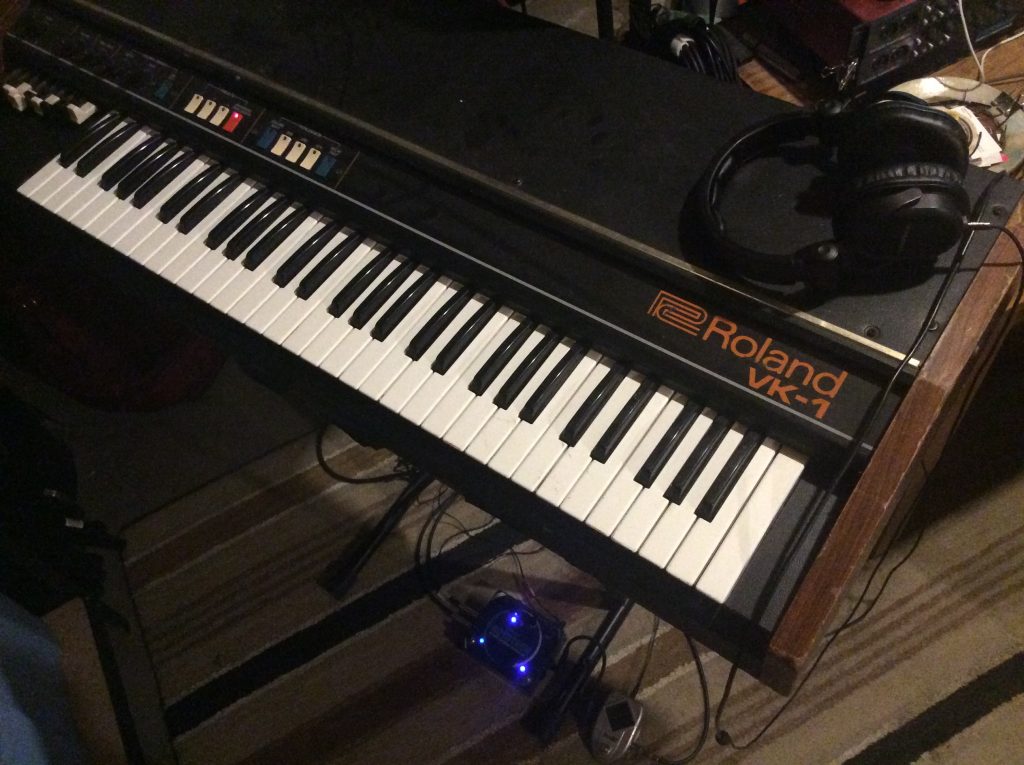Here’s two songs from my SP-404 SX project, the first featuring legendary Lawrence artist Approach.
-
“A Weirdest Beat Tape” Out In July!
-
“They Come At Night” (Run For It remix) Visualizer
-
Check Out This Wild Waveform
-
One Weird Thing About Playing Bass
This started as an email to Cory, on the heels of finishing Fight Songs bass lines.
One weird thing about writing and playing bass lines is that, the way my brain works, it feels like I’m searching for the ideal platonic form of the bass line for each song. It feels like there’s only one mathematically correct answer and I have to play around until I find it; which notes and rhythms, which octaves for the notes, where to put the runs, etc.
It’s not entirely literally true; I can hear some spots where two notes might be equally valid, but 99% of the time there’s an obvious right choice and it feels right and moral, even, to play it. That doesn’t at all mean the first note I try is right! Often the first 80% of the line will come to me pretty quickly, on my first few plays through the song, but I’ll spend a good amount of time on the last 20%, especially the ascending / descending runs, to make sure I hit the exact right notes. It feels like working out a proof, and it’s very satisfying to get right (and frustrating to get wrong)!
On one little line in “Lost,” the very end of the chorus that leads back down to the start of the chorus progression, I tried a ton of different combinations of notes for that 4-note descending run before I found the “right” one.
(more…) -
Early Recording Rigs
This is a leftover thought from the “A Life Without Fireflies” episode of The Long Play Listening Party that I found in the email archive.
Talking through my early recording experiments and gear I realized that prior to the purchase of my Digi001 ProTools LE system in November 2022, I had only ever self-recorded acoustic music with either my MiniDisc player and a computer mic or a 4-track tape machine. (howie&scott’s near and far was done by Fred Ritter, Jacob’s dad, on a digital 8-track.)
Just ten months after buying the 001 rig I was in Doug Van Sloan’s mastering studio with signs.comets, plus we had also recorded Shacker’s Pardon My Pretension…, Rob’s A Life Without Fireflies, and Blame The Game’s EP. That level of productivity is bonkers to try and wrap my mind around now! Plus, Scott and I were landscaping in Lincoln full-time that summer, we weren’t just making music!
-
Night Mode “Morphine Induction” Story Video
-
Been Worse About Blogging Than I Thought
A lot’s going on though.
Had great guests on the podcast.
Waiting on Fight Songs guests to send their parts in (thanks Cory!). About half the songs are pretty well mixed.
Got an album of DrumBrute beats, synth, and Royce’s vocals ready to drop as soon as we make a release plan. The follow-up is well underway too, with Monotribe beats and different vocalists this time.
I designed a new pedal, the “5KR” for Five Knob Rangemaster, and parts arrived yesterday for a 6-unit run.
Built a remote switch for my Pigtronix Echolution and I’ve been practicing my pentatonic scales over loops.
Was well into a MS-20 and modular record when I stupidly fried a $300 module. Have replaced the module but haven’t psyched myself back up to play yet.
My 404 mkII arrived and I’ve started on it a little bit, but nothing serious yet. I don’t think there’s been space in my brain.
-
Roland VK-1
Last May I impulse-bought a Roland VK-1, which is a synthesizer designed to sound and be controlled like a tonewheel organ (such as a Hammond). Yesterday I finally started putting it to work on Fight Songs, along with a Pigtronix Rototron Leslie speaker simulator.

Dynamic duo In a side-by-side comparison it won’t fool anyone into thinking it’s a real Hammond and Leslie. But it does sound good, even great in a track, and at something like 20% of the price and weight of the real thing I consider it a steal.
I’ve been attempting to channel my inner Steve Nieve (with moderate success, though you’ll be the judge of that). I’m not riding the drawbars live yet, but I’m dialing in a unique timbre for each track, switching Rototron speeds, and sliding up and down. Maybe too much sliding. (You’ll also be the judge of that. It’s very Nieve-y, though!)
(more…) -
Writing Lyrics
I should have written this back in September when it was fresh, but here we go; a deep dive into how I wrote one song.
Below, on the left, is the original sheet for what has become “March Four Hundred and First” from my upcoming Fight Songs.

Working title “mTap Reverb” (“March Four Hundred And First”) rough song sheets This song started by accident, as they often do. I was playing guitar through my Eventide TimeFactor delay on the multi-tap algorithm, and came up with some parts I liked and vocal melodies with scratch (i.e. to be replaced later) lyrics to go with the guitar parts. I recorded a rough instrumental demo of the guitar parts and wrote out the vocal ideas on this sheet.
(more…) -
All Of The Project Updates
So much music! Not a lot of blogging :\
- Fight Songs – Lead vocals are done. Getting the mixes into shape to send out to collaborators and for writing backing vocals and keys
- Night Mode – Two albums (companions) out to Drew and Damon for review/approval/release. Third album Only Mostly Dead probably finished and ready for art / CDs
- Got weird and just made a noise project over the weekend, probably coming within a week or two under a new name. Might be a one-off, listening to it now!
- SP-404 – Collaborative album with DrumBrute jams x Royce Diamond vocal samples coming together quickly. Seven down, two to go. Remix beat tape also progressing. Can’t decide which order to release them in
- ESR Graphic Fuzz variant – On hold while I sang. Still thinking about it
- Ampeg V4 – Back from the tech. Need to plug it in just for fun, probably tonight
- LPLP – Returning soon! Nate’s been working on some refreshed logistics to make things easier for our guests
I think that’s most of it? Santa brought two new modular… modules… and I’m still figuring them out, but I’m sure I’ll make a record with those soon in the vein of Thinking About The Meaninglessness…
This noise thing is niche, but really cool, I think.
-
The Long Play Listening Party Show Notes for The Best Music We Heard In 2021 Party Line
Part 1 –
Jimbo Mathus & Andrew Bird, “These 13” –
https://open.spotify.com/album/5e7me68eSPsVkbQoGdpEkhCedric Burnside, “I Be Trying” –
https://cedricburnside.bandcamp.com/album/i-be-tryingTil Willis, “Promise of Wishful Thinking” –
(more…)
https://tilwillis.bandcamp.com/track/promise-of-wishful-thinking-2 -
The Best Music We Heard In 2021
In randomized order, here is the best music Howie heard in 2021.
Abul Mogard, “In Immobile Air” – The varieties of ambient music continue to surprise me. Mogard (a pen name, almost certainly) combines simple pitches and noise like sculpture, crafting installations I seem to approach, wander around, and gently walk away from.
Nala Sinephro, “Space 1.8” – Sax and synth sound like they were made for each other in Sinephro’s cosmic, jazz-inspired explorations.
Nao, “And Then Life Was Beautiful” – Nao’s singular unification of vintage and modern R&B styles. Taking her debut EPs together she’s one record away from acing the Five Album Test, and I don’t doubt she’ll get there.
(more…)

